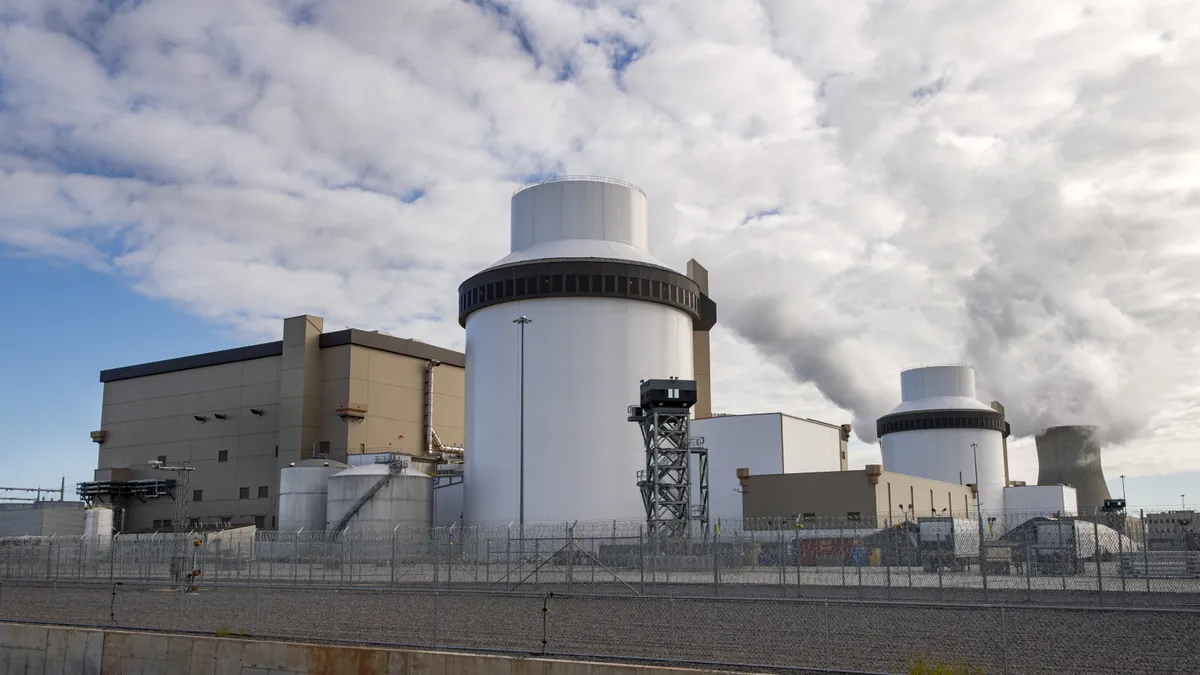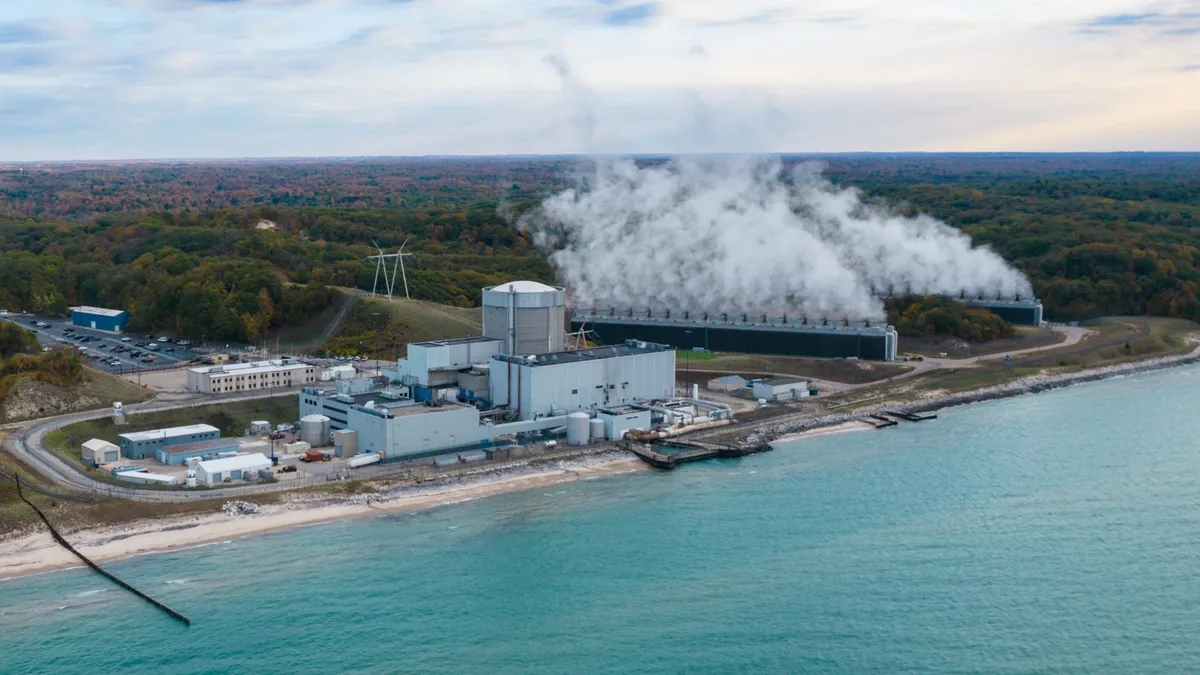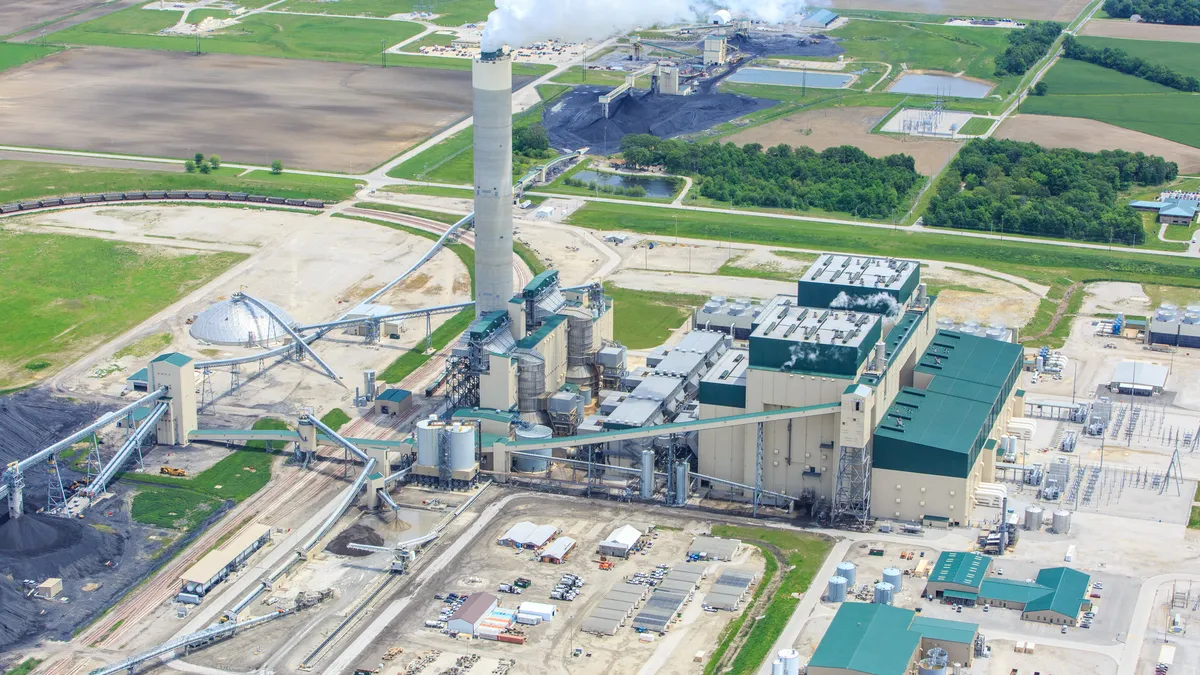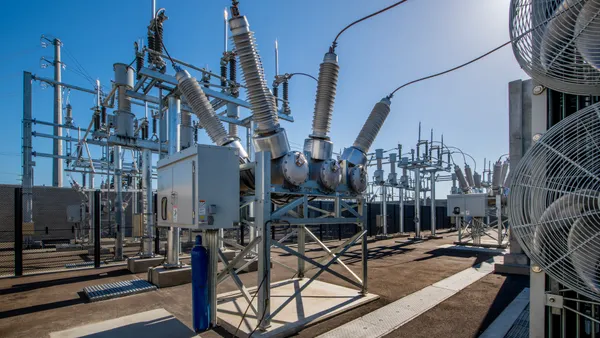FirstEnergy faces little direct exposure to the Trump administration’s tariffs on foreign imports, said Brian Tierney, FirstEnergy chair, president and CEO, during a Thursday earnings call.
The utility company’s tariff exposure represents less than 0.2% on its $28 billion, five-year capital investment program, according to Tierney. “Proactive management of our supply chain since COVID has resulted in a diversified supplier base with little exposure to single-source suppliers,” he said, noting that most of the company’s operations and maintenance expense is labor.
However, Tierney said he agreed with comments made by Beth Hammack, president and CEO of the Federal Reserve Bank of Cleveland, that tariffs add economic uncertainty — making it difficult for people to make investment decisions.
“We don't anticipate a significant impact from an income standpoint in the near-term associated with the near-term uncertainty that we're dealing with,” Tierney said in response to an analyst question about a possible economic slowdown. “But the quicker there's certainty from an investment cycle standpoint, I think the quicker we'll be able to see people be able to make those investment decisions and get on with investing in their business, whatever the answer is from a tariff standpoint.”
A report released Tuesday by the Cleveland Fed found that 64% of respondents to a February survey expected that their business would be affected by import tariffs. “Sizable majorities of respondents expected tariffs to increase both input costs and selling prices while decreasing demand for their products and services,” Cleveland Fed analysts said in the report.
FirstEnergy’s industrial sales fell about 6% to 12.8 million MWh in the first quarter, down from 13.6 million MWh in the third quarter last year, according to the company’s earnings presentation. The dip is mainly from steel manufacturers slowing production related to automotive demand, said Jon Taylor, senior vice president and CFO.
Meanwhile, interest from potential data center customers hasn’t slowed, according to Tierney. The Akron, Ohio-based company’s utilities received 15 large load interconnection study requests for data centers, mainly in Pennsylvania and Ohio, representing about 9 GW, he said. FirstEnergy utilities have 2.6 GW of active or contracted data center load, according to Tierney.
Overall, FirstEnergy utilities have received 80 GW in large load interconnection study requests since January 2024, according to the presentation.
When asked about colocating data centers at power plants, Tierney said there is a major difference between siting a data center at an existing power plant versus a new one.
“I think net new incremental capacity with colocation is going to be an easier path than taking existing capacity out of the market,” he said.
Jeffries analysts echoed Tierney’s assessment in a report Thursday. “Initially, the idea of leveraging existing power plants to support data centers and rapidly interconnect them to the grid was attractive,” but the focus has shifted to expanding capacity to meet the demand, the analysts said. “While there was a belief that existing nuclear plants could support data centers at high margins, concerns about reliability and affordability from regulators/stakeholders indicate that new capacity will be necessary to ensure a stable power supply.”
PJM capacity market and price hikes
State utility commissions and FirstEnergy are “very concerned” about the price increases set to take effect on June 1 as a result of the PJM Interconnection’s last capacity auction, according to Tierney. The New Jersey Board of Public Utilities expects average residential customers of Jersey Central Power & Light, a FirstEnergy utility, will see a 20.2% increase.
“It would be one thing if the capacity auction pricing that we're facing was bringing new capacity, new dispatchable capacity to the market and the customers were actually getting some value out of that,” Tierney said. “We don't see that as being the case.”
The New Jersey BPU on Wednesday asked utilities to see if they could delay the capacity-related price hike for four months, Tierney noted. “We're going to be as constructive and productive as we can in trying to make that happen,” he said.
There is widespread opposition to reregulating utilities that divested their generating assets, according to Tierney. “I don't think that’s a winner anywhere,” he said. “I think there are ways that you can address the resource adequacy problem without having to do that.”
States like California, New York and Texas have adopted other approaches for spurring new generation sources, Tierney said.
“The only way these problems are going to be resolved is by the states taking action themselves to address the problems for their own states,” he said. “It’s leadership by the governors in the states that are going to address this problem most directly.”
FirstEnergy’s first quarter income jumped 42% to $360 million, or 62 cents/share, up from $253 million, or 44 cents/share, the year before, partly on rate increases, according to the company. Revenue increased 15% in the quarter to $3.8 billion from $3.3 billion in the same period last year.
Weather-adjusted sales by FirstEnergy’s utilities fell 1.3% in the first quarter to 38.1 million MWh, down from 38.6 million MWh in the year-ago period, according to the company’s earnings presentation. However, when not including the February 2024 “leap” day in the comparison, sales fell only 0.2%, the company estimated.
FirstEnergy’s electric utilities have about 6 million customers in Ohio, Pennsylvania, New Jersey, West Virginia, Maryland and New York.






















